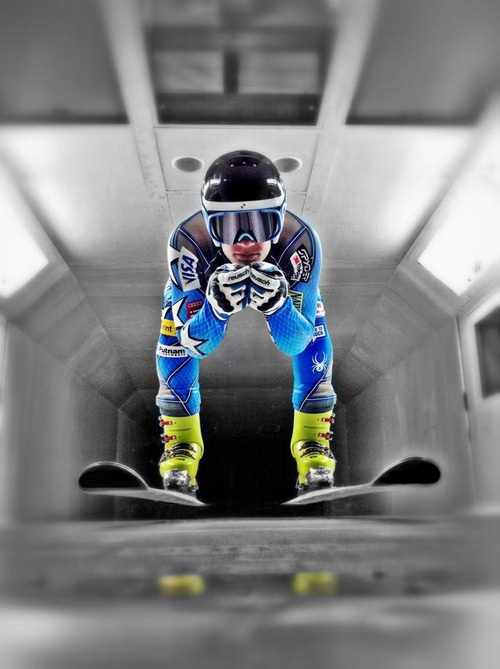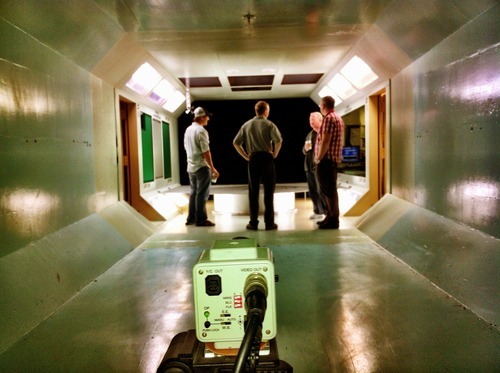The partnership shared between Spyder and the U.S. Ski Team has spanned over three decades and has accounted for an abounding number of World Cup and Olympic Medals. A big part of that partnership is focused on creating the fastest speed suits in the world – athletes travel up to 90 MPH in a typical World Cup downhill course, and aerodynamics matter.
Also important is designing speed suits that are compliant with the stringent rules set by the Federation of International Skiing (FIS) for air permeability (so that in the case of a crash, friction is mitigated so as to prevent the suit from literally melting to the athlete).
In order to ensure that the suits Spyder designs for the U.S. Ski Team strike a perfect balance between speed and permeability, we conduct annual wind tunnel tests – a couple of weeks ago, we took Spyder Athlete and U.S. Ski Team Speedster Steven Nyman to the Low Speed Wind Tunnel (LSWT) in San Diego to run a battery of tests on various suits at various speeds and under various other conditions (we can’t tell you – it’s a secret).

Spyder Athlete Steven Nyman in San Diego’s Low Speed Wind Tunnel (okay, we used a little Photoshop).
Continue reading after the jump…
The LSWT can create a controllable flow of air at as low as 10 MPH, and can ramp up its turbine to create a flow as high as 70 MPH, so we were able to test various suits at various speed intervals and collect useful data.
While we aren’t going to tell you about the detailed results of the tests we performed, we will tell you that the suits that Spyder designs for the U.S. Ski Team are the fastest in the world.

Representatives from Spyder and the U.S. Ski Team discuss the battery of tests to be performed during our day at the LSWT.
The sort of data-driven product testing we were able to achieve at San Diego’s LSWT is crucial as Spyder continues to support elite skiers in their quest for gold medals.

San Diego’s LSWT was opened in 1947 to test the World War II planes and bombs being produced in the San Diego vicinity. Today, it plays host to a number of ‘human missile tests’ like the one we conducted with Steven Nyman.






